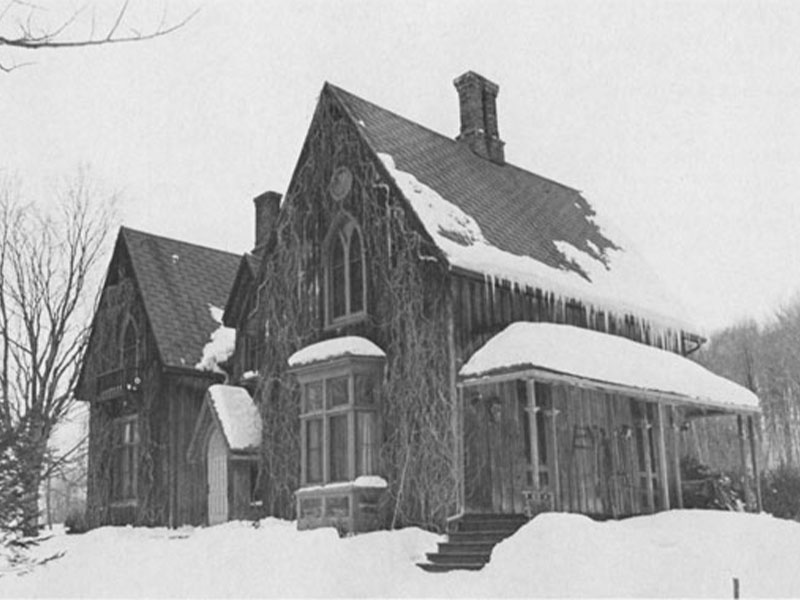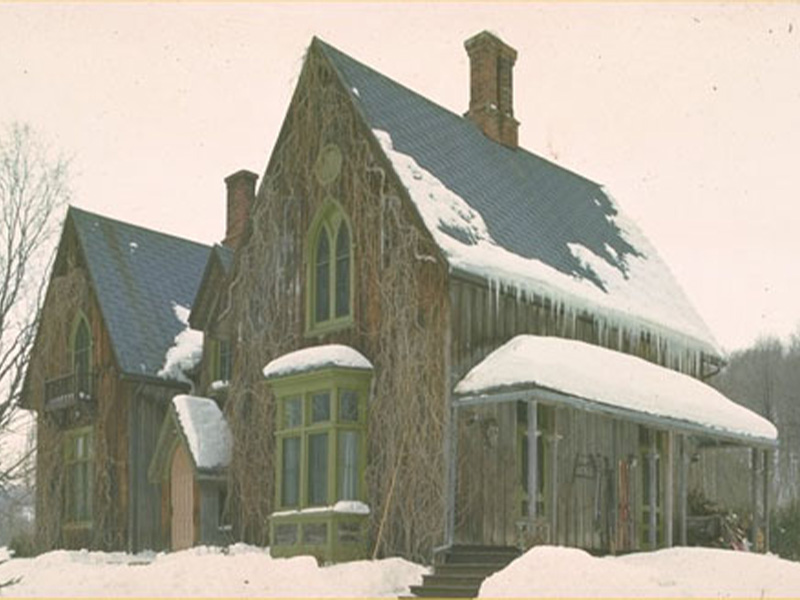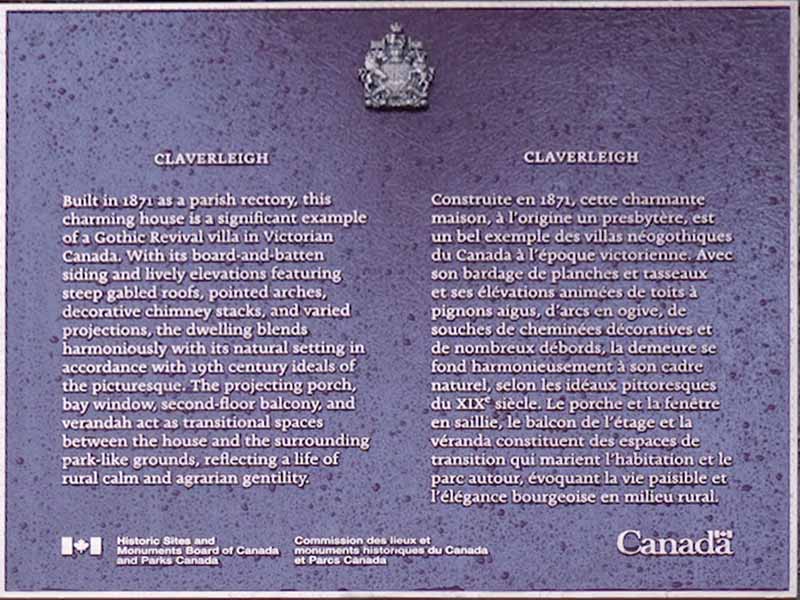Claverleigh National Historic Site

© Parks Canada / Chris Johnstone
Claverleigh was designated a national historic site in 1990.
Commemorative plaque: 8242, County Road 9, Creemore, OntarioFootnote 1
Claverleigh
Built in 1871 as a parish rectory, this charming house is a significant example of a Gothic Revival villa in Victorian Canada. With its board-and-batten siding and lively elevations featuring steep gabled roofs, pointed arches, decorative chimney stacks, and varied projections, the dwelling blends harmoniously with its natural setting in accordance with 19th century ideals of the picturesque. The projecting porch, bay window, second-floor balcony, and verandah act as transitional spaces between the house and the surrounding park-like grounds, reflecting a life of rural calm and agrarian gentility.
Claverleigh
Built in 1871 as a parish rectory, this charming house is a significant example of a Gothic Revival villa in Victorian Canada. There are few Canadian examples of this architectural style. The Gothic Revival villas of the mid-19th century were spacious, asymmetrical dwellings with steep roofs and prominent chimney stacks that created a striking silhouette. They were designed, in accordance to picturesque ideals, to be well-integrated within large, landscaped properties, fostering a sympathetic relationship with the natural setting. Deep eaves, balconies, and verandahs functioned as transitional spaces that provided access to the outdoors, while also providing opportunities to play with sunlight and shadow. Exterior decoration was generally limited to the gables, mouldings, and shaped chimney stacks. Despite their distinct design, Gothic Revival villas were designed, first and foremost, to be comfortable homes.

© Parks Canada

© Parks Canada
William Forster was the original owner of Claverleigh. He came to Canada West (today, Ontario) from England in 1850 and was subsequently ordained as an Anglican priest. In the 1870s, he asked his brother, architect Richard Forster, to design him a home and rectory befitting of a gentlemen priest. Construction began within a year at a site in rural Ontario, near Creemore.
With its board-and-batten siding and lively elevations featuring steep gabled roofs, pointed arches, decorative chimney stacks, and varied projections, Claverleigh blends harmoniously with its natural setting in accordance with 19th century ideals of the picturesque. The projecting porch, bay window, second-floor balcony, and verandah act as transitional spaces between the house and the surrounding park-like grounds, reflecting a life of rural calm and agrarian gentility.
This press backgrounder was prepared at the time of the Ministerial announcement in 2017.

Description of historic place
Claverleigh is a Gothic Revival-style villa set in extensive park-like grounds in an isolated rural setting 3.2 kilometres (2 miles) west of the Village of Creemore, Ontario.
Heritage value
Claverleigh was designated a national historic site in 1990 as a very fine representative example of a Gothic Revival-style villa. The heritage value of this site resides in its physical expression of the Gothic Revival-style villa in Canada. The house was built in 1871 by William Forster as a parish rectory, to plans by his brother, British architect Richard Forster. The Gothic Revival style was considered suitably ecclesiastical in character for the style of a small rectory.
Sources: Historic Sites and Monuments Board of Canada, Minutes, June 1989, February 1990, June 1990, November 1990.
The National Program of Historical Commemoration relies on the participation of Canadians in the identification of places, events and persons of national historic significance. Any member of the public can nominate a topic for consideration by the Historic Sites and Monuments Board of Canada.
- Date modified :